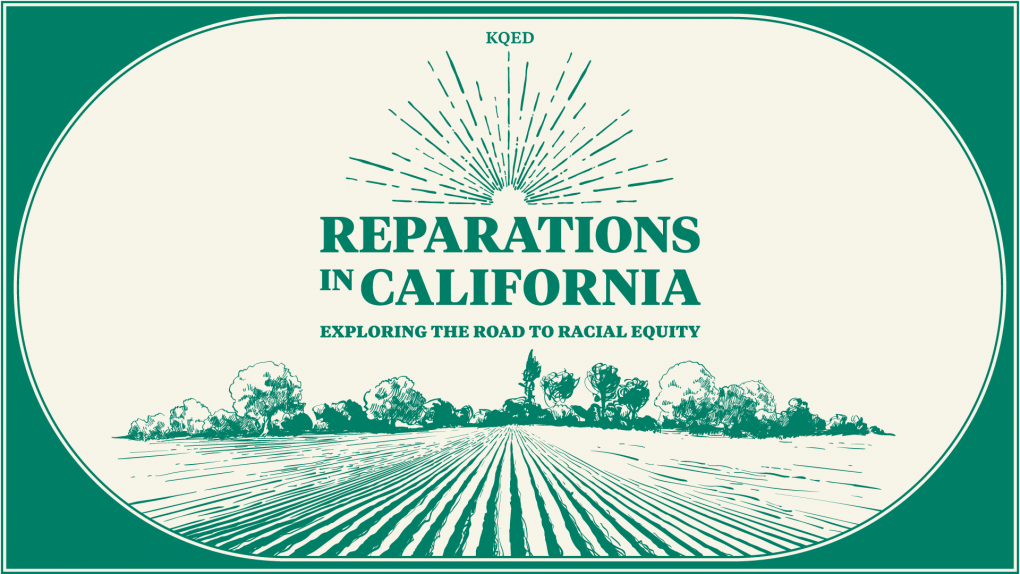California isn’t as progressive as its national reputation suggests. In 1996, California became the first state in the nation to ban affirmative action when Proposition 209, a measure that barred preferential treatment on the basis of race, sex and ethnicity, was passed. In 2020 affirmative action was back on the ballot, but Proposition 16, which intended to address racial and gender disparities in government hiring and contracting and public university admissions, was easily defeated.
Denying Black people access to opportunity is a cornerstone of America. In our film, some of the task force members share their personal experiences. Monica Montgomery Steppe, a San Diego City Council member, calls herself a “Prop. 209 baby.”
“My parents were running a proficient, professional construction business and then Prop. 209 was passed,” she says. “My father started to struggle in his business, so that’s part of why I’m so passionate about reparations and just equity and making sure that we’re fair, especially here in California.”
Dr. Cheryl Grills is from Charleston, the harbor city in South Carolina where, experts believe, about 40% of the enslaved Africans imported to America between 1670 and 1808 were auctioned. South Carolina is a state where the Confederacy is revered. The Confederate flag flies at the state capitol on May 10, Confederate Memorial Day. The flag flew on top of the capitol dome until 2015. It was taken down on June 27, 2015, because a white supremacist shot and killed nine — yeah, that number again — Black people studying the Bible at Mother Emanuel, a church in Charleston.
“The effects of enslavement and post-enslavement, Jim Crow, lack of civil rights — the impact of all of those things on the Black psyche are multifold,” says Grills, director of the Psychology Applied Research Center at Loyola Marymount University.
Rev. Amos Brown, pastor at Third Baptist Church in San Francisco, says he first became conscious of the deleterious effects of racism in 1955, when he saw the photo of Emmett Till’s ravaged body in Jet magazine. Till, a Black boy from Chicago, had been visiting relatives in Mississippi when he stopped at Bryant’s Grocery and Meat Market.
A white woman, Carolyn Bryant, said Till accosted her. Four days later, two white men — Bryant’s husband and his half-brother — kidnapped Till from a relative’s house. They beat him. They shot him. They wrapped his body in barbed wire and tied a 75-pound cotton gin fan around his neck. Then they dumped him in the Tallahatchie River. The white men were acquitted of murder by an all-white jury.
Bryant, who died last week, lived to be 88. Till was 14 when he was lynched.
Brown was shaken by Till’s photo. Medgar Evers, the first field director of the National Association for the Advancement of Colored People in Mississippi, calmed him.
“He said to me, ‘Amos, I understand how hurt you are, but don’t just be angry. Let’s be smart so that you will be able to fight this evil of race and injustice,’” Brown says.
Evers, a World War II veteran, was murdered by a white supremacist in 1963.
It was the case of the Central Park Five that spurred the activism of Lisa Holder, a civil rights attorney. You might remember the five Black and Latino boys who were wrongly convicted for the 1989 rape of a jogger in New York’s Central Park. They were exonerated after serving lengthy prison sentences.
“The disparities and outcomes that we’re seeing in terms of wealth, health, education [and] access are not about anything that Black people did wrong, but it’s about a system that has actually been designed to keep Black people at the bottom,” Holder says.
Donald Tamaki, whose parents were among the estimated 82,000 Japanese Americans who received reparations more than three decades ago for the mass incarceration of people of Japanese ancestry during World War II, says the task force set out to do three things.
“One was to document the harm of enslavement, Jim Crow exclusion and connect the dots between that and today’s consequences,” says Tamaki, senior counsel at Minami Tamaki. “The second thing is to find ways to educate the American public over this history that’s really been erased. The third requirement is to make recommendations.”
Tamaki, who worked to overturn the conviction of Fred Korematsu, a Japanese American man from Oakland who had resisted incarceration, says that “Black people and their struggle really opened the door for women, Asian Americans, Latino Americans and all other historically disfavored groups.”
Only four of the Little Rock Nine graduated from Little Rock Central High School, including Thomas, who earned a degree from Los Angeles State College and was a Vietnam War veteran. After serving his country, he had several jobs, including as an accounting clerk with the Department of Defense.
Last summer, the task force released a preliminary report detailing California’s history of enslavement and its many decades of discriminatory policies — in education, housing, health care, criminal justice and other areas — that established the systemic racism that persists.
“We’re really a study group to come up with recommendations to give to the Legislature,” Jones-Sawyer says in our film. “Hopefully, the governor will sign it.”

